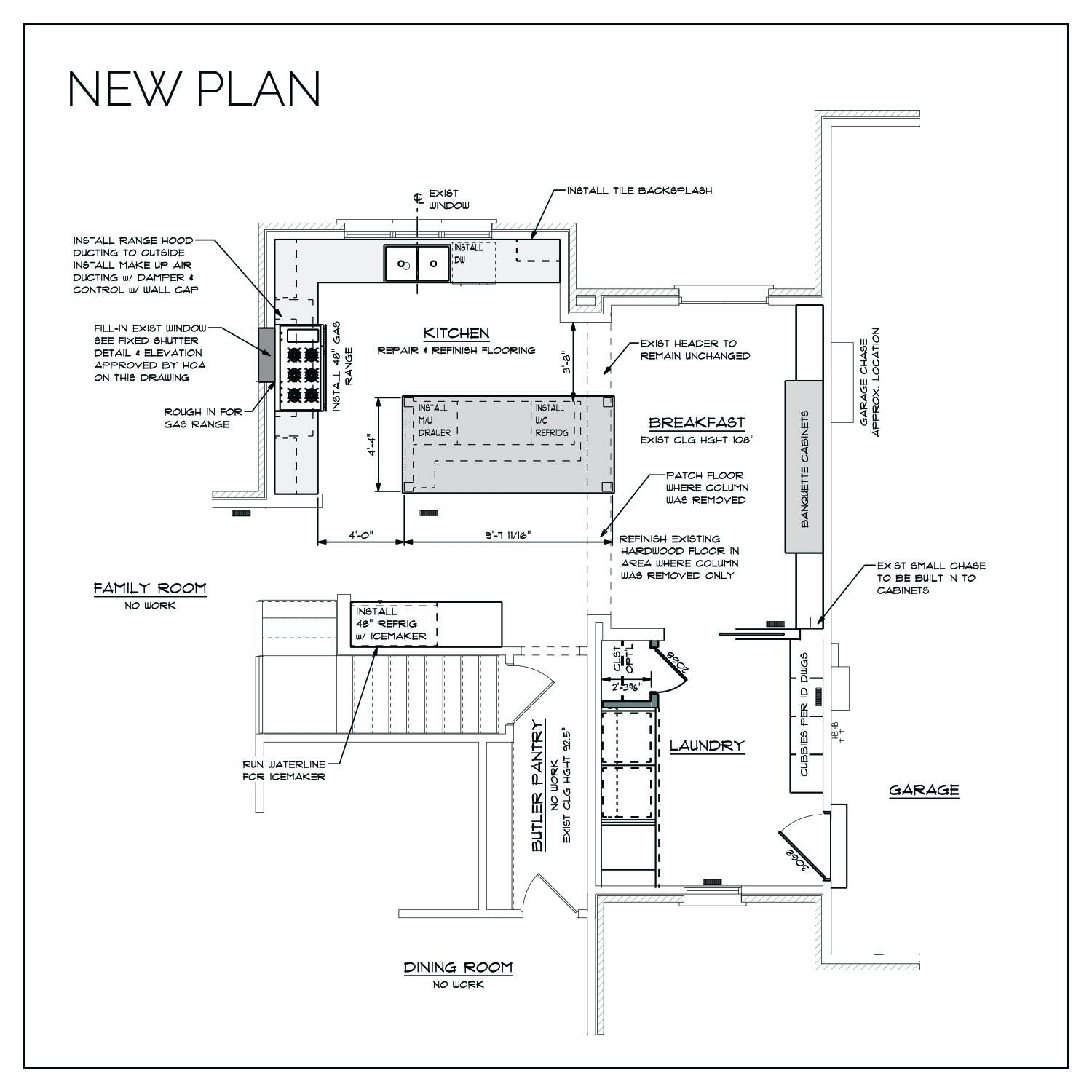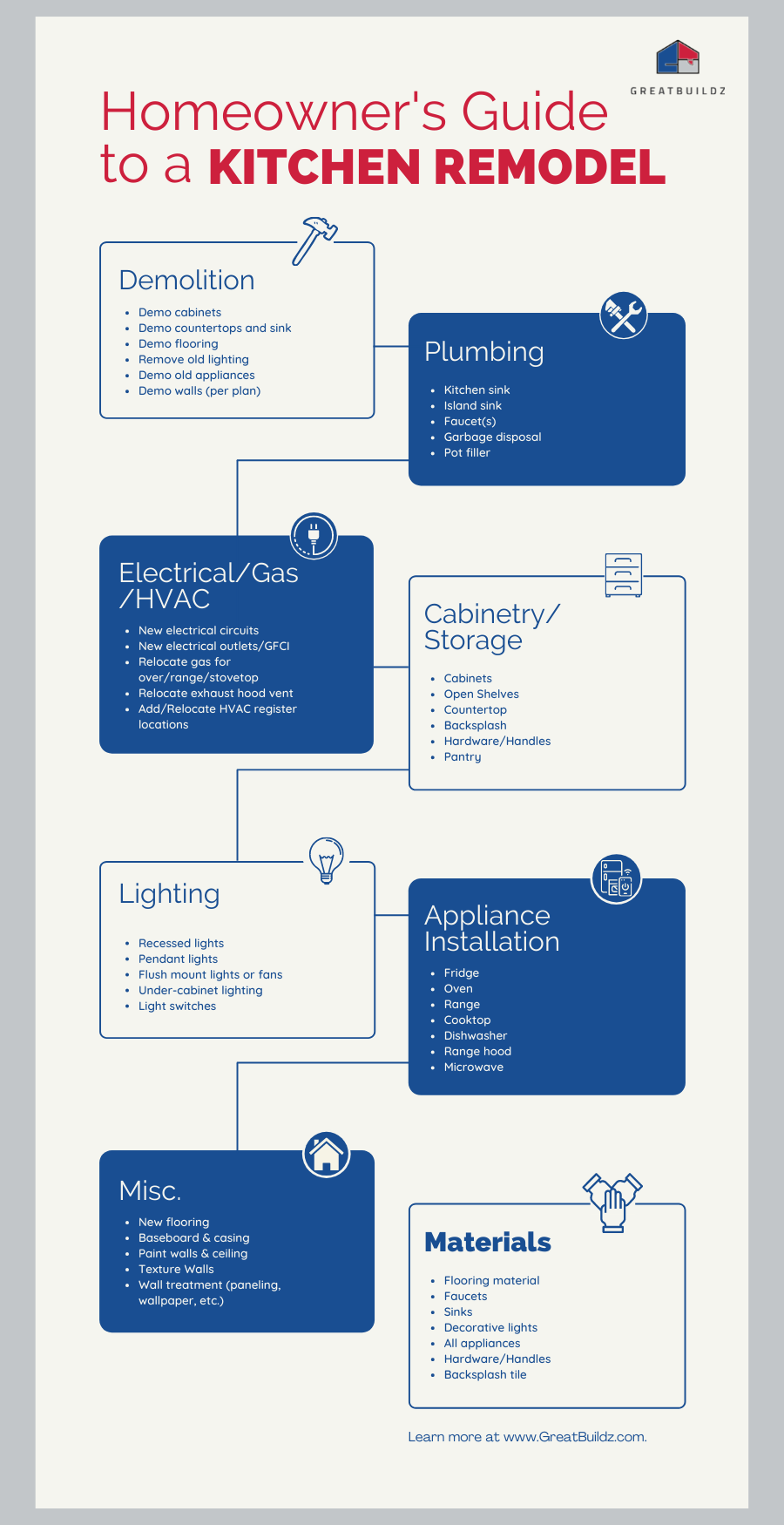Planning a successful home renovation requires careful preparation and attention to detail. Key steps include setting a budget, hiring professionals, and creating a timeline.
Home renovations can be both exciting and overwhelming. Proper planning ensures a smooth process. Start by defining your goals and what you wish to achieve. Set a realistic budget and stick to it. Research and hire reliable professionals for the job.
Create a detailed timeline to keep the project on track. Prioritize tasks and focus on essential upgrades first. Clear communication with contractors and regular check-ins will prevent misunderstandings. By following these steps, you can transform your home efficiently and enjoy the renovation experience.

Credit: www.thisoldhouse.com
Setting Clear Goals
Planning a successful home renovation starts with setting clear goals. This step ensures your renovation aligns with your needs and vision. It helps avoid common pitfalls and keeps your project on track.
Identifying Needs
Begin by identifying the primary needs for your renovation. Ask yourself:
- What problems does the current space have?
- Which areas need the most attention?
- Are there any safety concerns?
Make a list of essential changes. This list will guide your renovation plans. Consider both short-term and long-term needs.
Defining Your Vision
Once you’ve identified your needs, define your vision. Think about how you want your space to look and feel. Start by asking yourself:
- What style do you prefer?
- What colors and materials do you like?
- How will the space be used?
Create a vision board with images and ideas. This visual aid will help you stay focused on your goals. It also provides a reference for your contractors.
Incorporate elements that reflect your personal taste. This ensures your renovated space feels like home.

Credit: www.davefox.com
Creating A Budget
Creating a budget is a critical step in planning your home renovation. A well-planned budget helps you avoid overspending. It ensures you get the most out of your investment.
Estimating Costs
Start by estimating the costs of your renovation. List all the tasks and materials needed. Consult with professionals to get accurate quotes. Use online calculators for a rough estimate.
Here is a simple table to help you organize your costs:
| Item | Estimated Cost |
|---|---|
| Materials | $5,000 |
| Labor | $3,000 |
| Permits | $500 |
| Unexpected Costs | $1,000 |
Allocating Funds
Once you have estimated the costs, allocate your funds wisely. Prioritize essential tasks first. Set aside a contingency fund for unexpected expenses.
- Essential Tasks: Structural repairs, plumbing, electrical work
- Secondary Tasks: Painting, flooring, fixtures
Here is a simple allocation guide:
- Essential Tasks: 60% of the budget
- Secondary Tasks: 30% of the budget
- Contingency Fund: 10% of the budget
Allocating funds properly ensures a smooth renovation process. Stick to your budget to avoid financial stress.
Finding The Right Contractor
Planning a successful home renovation requires careful consideration, especially when selecting the right contractor. The contractor you choose will significantly impact the quality and timeline of your project. Ensuring you find a reliable and skilled professional is crucial for a smooth renovation process.
Researching Options
Start by researching potential contractors in your area. Use online directories, social media, and review websites to compile a list. Look for contractors with high ratings and positive feedback from previous clients.
- Check their credentials and licenses.
- Read reviews and testimonials.
- Visit their websites for portfolio examples.
Ask friends and family for recommendations. Personal experiences can provide valuable insights into a contractor’s reliability and workmanship.
Conducting Interviews
Once you have a shortlist, conduct interviews to assess their suitability. Prepare a list of questions to evaluate their experience and approach.
- Ask about their past projects similar to yours.
- Discuss timelines and availability.
- Inquire about their process and communication methods.
During the interview, pay attention to their professionalism and communication skills. A good contractor should be transparent and easy to communicate with.
Comparing contractors based on their responses will help you make an informed decision. Ensure you select someone who aligns with your vision and can deliver quality work.
Design And Planning
Planning a home renovation can be exciting. The first step is the design and planning phase. This stage ensures your project runs smoothly. Focusing on key steps will help you avoid mistakes.
Drafting Plans
Start by drafting detailed plans. These plans outline your vision. Consider using software tools for accuracy. Include room dimensions and layout changes.
| Plan Component | Description |
|---|---|
| Floor Plans | Shows the layout of each room. |
| Elevations | Displays the exterior views of your home. |
| 3D Models | Gives a realistic view of the renovation. |
Selecting Materials
Choosing the right materials is essential. Quality materials ensure durability. Visit local stores to see options in person. Consider the style and function of each material.
- Flooring: Hardwood, tile, or carpet.
- Countertops: Granite, quartz, or laminate.
- Paint: Choose colors that match your theme.
Create a budget for each material. This helps manage costs effectively. Use a spreadsheet to track expenses.
- Make a list of needed materials.
- Research costs online.
- Visit stores for price comparisons.
Remember, the right materials enhance your home’s beauty and value. Take your time in making these choices. It will pay off in the long run.
Getting Permits
Planning a successful home renovation requires careful steps. One critical step is obtaining the necessary permits. This ensures your project complies with local building codes and regulations. Getting permits can seem daunting, but breaking it down into manageable tasks makes it easier.
Understanding Regulations
Before starting your renovation, it’s important to understand local regulations. Each area has specific rules about what requires a permit. Common renovations needing permits include:
- Building extensions
- Electrical work
- Plumbing changes
- Structural alterations
Consult your local building authority for a detailed list. Knowing what is required helps avoid costly penalties later.
Submitting Applications
Once you understand the regulations, the next step is submitting applications. This process includes:
- Filling out the application form
- Providing detailed project plans
- Paying the required fees
Ensure your plans are clear and detailed. Include all necessary specifications and measurements. Double-check for completeness before submission to avoid delays.
After submitting, the building authority reviews your application. They may ask for additional information or modifications. Be prepared to address these requests promptly to keep your project on track.
| Permit Type | Average Cost | Processing Time |
|---|---|---|
| Building Permit | $500 – $2,000 | 2-4 weeks |
| Electrical Permit | $50 – $300 | 1-2 weeks |
| Plumbing Permit | $100 – $500 | 1-3 weeks |
Proper planning and understanding the permit process will make your renovation smoother. Stay organized, follow local regulations, and keep communication open with authorities.

Credit: www.tejjy.com
Scheduling The Project
Planning a home renovation can be exciting and challenging. One of the key aspects to ensure a smooth renovation process is proper scheduling. A well-thought-out schedule helps in managing time, resources, and expectations effectively. Below are the crucial steps for scheduling your home renovation project.
Setting Timelines
Setting realistic timelines is essential for a successful renovation. Start by breaking down the project into smaller tasks. Assign a specific timeframe for each task. This helps in tracking progress and ensures timely completion. Use a project management tool or a simple calendar to mark important dates and milestones.
- Assess the scope of work
- Identify key tasks
- Allocate time for each task
- Set deadlines for milestones
Coordinating With Contractors
Effective coordination with contractors is crucial. Ensure clear communication regarding timelines and expectations. Schedule regular meetings to discuss progress and address any issues promptly. Make sure to buffer extra time for unforeseen delays.
| Task | Contractor | Deadline |
|---|---|---|
| Demolition | John Doe | Week 1 |
| Plumbing | Jane Smith | Week 2 |
| Electrical | Mike Johnson | Week 3 |
Always have a backup plan. This ensures the project stays on track. Clear communication and regular updates can minimize delays and keep everyone aligned.
Managing The Renovation
Managing a home renovation requires careful planning and execution. It involves overseeing daily tasks and handling unexpected issues. Effective management ensures a smooth and successful renovation process.
Daily Oversight
Daily oversight is crucial for keeping your renovation on track. Visit the site every day. Check progress and ensure work aligns with the plan. Use a checklist to monitor daily tasks.
| Task | Status |
|---|---|
| Inspect materials | Done |
| Review contractor work | Ongoing |
| Update budget | Pending |
Keep a daily log of activities. Document what gets done and what needs attention. This helps track progress and address issues promptly.
- Communicate with your contractor every day.
- Ensure they understand your expectations.
- Address any concerns immediately.
Handling Issues
Issues can arise during renovation. Be prepared to handle them swiftly. Identify problems early to avoid delays.
- Stay calm and assess the situation.
- Consult with your contractor for solutions.
- Decide on the best course of action.
- Document the issue and resolution.
Maintain a flexible mindset. Adapt your plans if needed. Ensure the project stays within budget and timeline.
Regularly review your budget. Make adjustments as necessary. Keep track of expenses to avoid overspending.
By managing daily oversight and handling issues effectively, you can ensure a smooth and successful home renovation.
Final Inspections
Final inspections are crucial in ensuring the success of your home renovation. They help identify any lingering issues and ensure everything meets your expectations. This step ensures that the work done is of high quality and that all tasks are completed.
Ensuring Quality
Quality is paramount in any renovation project. During final inspections, you should check all the work done. Look for any defects or unfinished tasks. Use a checklist to make sure nothing is missed. Here are some key areas to inspect:
- Walls and Paint: Check for even paint coverage and smooth finishes.
- Flooring: Ensure there are no gaps, loose tiles, or uneven surfaces.
- Plumbing: Test all faucets, showers, and toilets for leaks and proper function.
- Electrical: Test all light switches, outlets, and fixtures for correct operation.
Completing Punch List
A punch list is a document listing any remaining tasks or small fixes. Completing this list is vital for a smooth finish. Ensure all items on the punch list are addressed. Here’s how to handle it effectively:
- Walk through each room and note any issues.
- Communicate these issues to your contractor.
- Set a deadline for these issues to be resolved.
- Re-inspect the work once the punch list is completed.
| Inspection Area | Common Issues | What to Check |
|---|---|---|
| Walls and Paint | Uneven Coverage, Drips | Even Paint, Smooth Finish |
| Flooring | Gaps, Loose Tiles | Seamless, Firm Installation |
| Plumbing | Leaks, Malfunctions | No Leaks, Proper Flow |
| Electrical | Non-Functional Outlets | Correct Operation |
Frequently Asked Questions
What Are The First Steps In Home Renovation?
The first steps include setting a budget, defining your goals, and hiring a reliable contractor. Research and planning are crucial for a successful renovation.
How Do I Choose A Renovation Contractor?
Choose a contractor by checking references, reading reviews, and verifying licenses. Ensure they have experience with your type of project.
How Can I Stay On Budget During Renovation?
To stay on budget, plan meticulously, prioritize needs over wants, and track expenses regularly. Include a contingency fund for unexpected costs.
What Should I Consider When Designing My Space?
Consider functionality, lighting, and aesthetics when designing your space. Ensure the layout meets your needs and enhances your lifestyle.
Conclusion
Embarking on a home renovation can be exciting and rewarding. Plan carefully and prioritize key steps. Consider your budget, timeline, and professional help for a smooth process. With thoughtful preparation, your dream home can become a reality. Happy renovating!


GIPHY App Key not set. Please check settings